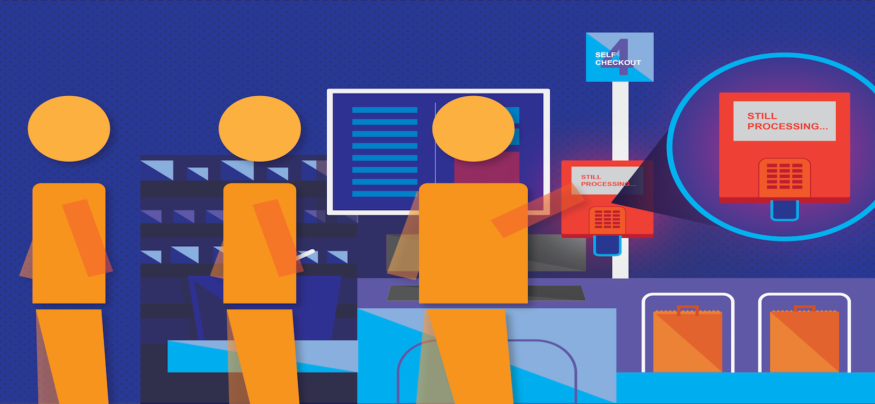While EMV technology provides greater security for point-of-sale (POS) card transactions, it has also caused significant delays in the checkout flow. Because customers at EMV-ready terminals can’t swipe their chip cards and must instead insert them into the machine and wait for the chip to function, both parties end up stuck waiting for the payment to process, which typically takes 12 to 16 seconds.
According to Cayan, a payments technology company, these seconds waiting for cards to process add up to 116 million hours a year in the U.S. And that doesn’t take into account the time customers spend determining whether a terminal is EMV-ready and requires their cards to be inserted, or if it’s still working on a magnetic strip and has to be swiped. Major retailers have widely adopted EMV, so it’s likely that the total purchasing volume using chip cards is much higher. But some small local retailers, who know most of their customers, don’t see a need to rush to EMV terminals because their fraud risks are low.
According to a recent column on FT.com’s Lex section, EMV “is still a mess. Retailers were supposed to switch from magnetic strips last October; many have not … it is confusing for shoppers.”
EMV Adoption Proven to Reduce Fraud
Despite the issues it can create for checkout flow, EMV technology has been proven to reduce fraud at physical stores. Mastercard reported that fraud decreased by approximately 39 percent from January 2015 to January 2016, and Aité Group estimates that EMV will “significantly reduce U.S. counterfeit card fraud — from an estimated peak of $3.61 billion in 2015 to $1.77 billion in 2018.”
Also, some card companies are making efforts to reduce the processing time. In June, Amex, which operates its own end-to-end card processing system, announced Amex Quick Chip, which enables cardholders to dip their chip cards during the checkout process and remove them before the transaction is completed, achieving a speed close to simply swiping. Similarly, Cayan recently announced that the ChipIQ technology they’ve built into their Genius platform has sped up EMV transactions to under 4 seconds.
Potential Benefits of Mobile Payments
In spite of these advancements, the additional seconds most EMV transactions incur have an especially significant impact during the busiest times of the year, like the Christmas holiday shopping season — challenging retailers to find ways to balance speed and security. Merchants could save time by promoting mobile payments, in which a customer simply holds their phone to the terminal and pays through a service such as Samsung Pay, which is compatible with NFC or magnetic stripe technologies. In a recent report, Javelin noted that the adoption of mobile wallets offered by merchants and card issuers has risen from 11 percent to 21 percent in three years. However, the number of transactions per person has dropped from 3.7 per month in 2013 to just 3 in 2015. The report goes on to note that mobile payment platforms have yet to gain widespread use, due to “the lack of clear consumer value.”
But their potential value to merchants is clear — mobile payments can speed up checkout lines. And as more retailers adopt EMV technology, they must look at new ways to enable consumers to pay more quickly and keep the lines moving.
Interested in learning more about how to balance efficiency and security in your stores? Having a strategy in place that prioritizes mobile transaction security is crucial.








